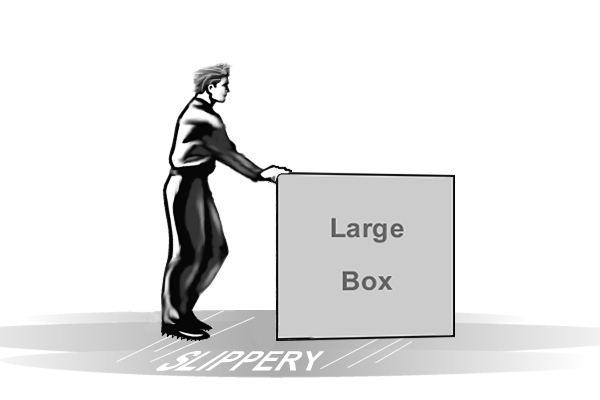Item FM092002: A box that is being pushed with a constant force can move faster than the person pushing it if the force of the push is greater than the force of friction on the box.
A man is pushing a box on a level surface. He is walking at constant speed and pushing with constant force. The surface is very slippery so the box slides easily, and he is wearing special shoes so he won’t slip and fall.

Could the box move faster than the man is walking?
- Yes, but only if he didn't walk fast.
- Yes, but only if he pushed the box harder and harder.
- Yes, but only if the force of the push on the box was greater than the force of friction on the box.
- No, because if he was pushing with constant force, the box would have to move at constant speed.
- Distribution of Responses

- Students Responding Correctly
| Group | Correct | Total | Percent |
|---|---|---|---|
| Overall | 636 | 1724 | 37% |
| Grades | |||
| 6–8 | 405 | 1106 | 37% |
| 9–12 | 230 | 617 | 37% |
| Gender | |||
| Male | 275 | 843 | 33% |
| Female | 354 | 856 | 41% |
| Primary Language | |||
| English | 597 | 1589 | 38% |
| Other | 32 | 99 | 32% |
- Disciplinary Core Ideas
- PS2.A The motion of an object is determined by the sum of the forces acting on it; if the total force on the object is not zero, its motion will change. The greater the mass of the object, the greater the force needed to achieve the same change in motion. For any given object, a larger force causes a larger change in motion.
PS2.A Newton's second law accurately predicts changes in the motion of macroscopic objects.

